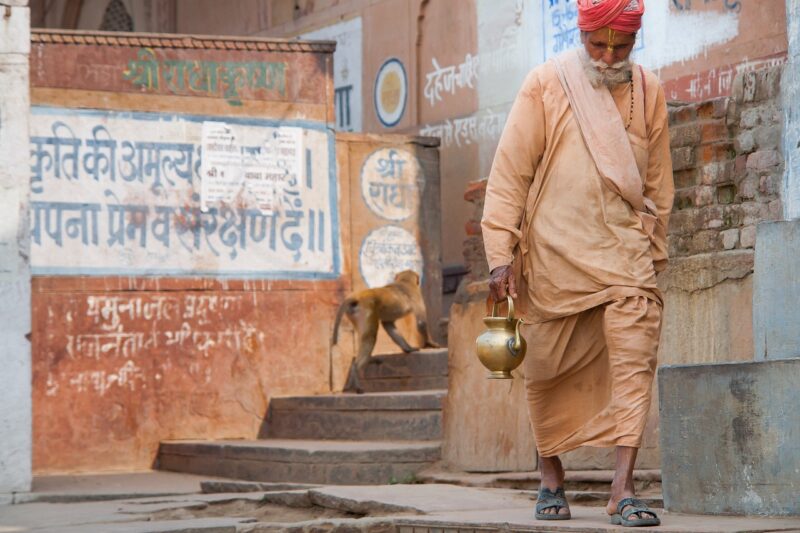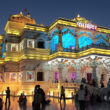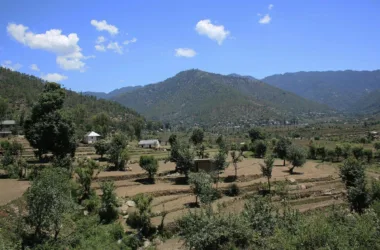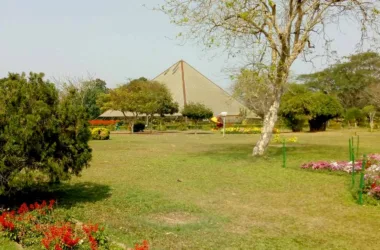Welcome to the mystical land of Vrindavan, where every corner whispers tales of devotion, spirituality, and vibrant culture. Nestled on the banks of the Yamuna River in the state of Uttar Pradesh, India, Vrindavan is not just a place; it’s an experience that transcends time and space.
Mythological Roots
Vrindavan’s roots dig deep into Hindu mythology, primarily associated with the eternal love story of Lord Krishna and Radha. It is believed to be the playground of Lord Krishna, where he spent his childhood days amidst the lush forests and pastoral landscapes. Legends of Krishna’s playful antics and divine love adorn the streets of Vrindavan, making it a significant pilgrimage site for millions of devotees worldwide.
Spiritual Heritage
Stepping into Vrindavan is like entering a realm of spirituality and devotion. The town is dotted with hundreds of temples, each echoing with the chants of hymns and prayers. Devotees flock to revered sites like the Banke Bihari Temple, ISKCON Temple, and Radha Raman Temple to seek blessings and immerse themselves in the divine aura of the place. The air is filled with the fragrance of incense and the sound of bells, creating an atmosphere of serenity and peace.
Cultural Richness
Beyond its spiritual allure, Vrindavan is a melting pot of culture and traditions. The town celebrates numerous festivals throughout the year, with Holi being the most renowned. During this festival of colors, Vrindavan comes alive with vibrant hues, joyous music, and spirited dance performances. The streets become a canvas of love and happiness as locals and visitors alike indulge in the festivities with great fervor.
Architectural Marvels
Vrindavan is not just about its spiritual and cultural heritage; it’s also a treasure trove of architectural marvels. The temples and monuments here showcase exquisite craftsmanship and intricate designs, reflecting various architectural styles through the ages. From the towering spires of the Govind Dev Temple to the serene beauty of the Prem Mandir, each structure tells a story of devotion and faith.
Modern Vrindavan
While deeply rooted in tradition, Vrindavan is also embracing modernity with open arms. The town has witnessed significant development in recent years, catering to the growing influx of tourists and pilgrims. However, this rapid growth has brought along its set of challenges, including environmental concerns and infrastructure issues. Balancing progress with the preservation of its cultural heritage remains a delicate task for the authorities.
Visitor Experience
For visitors, Vrindavan offers a plethora of experiences that cater to both the body and soul. Apart from visiting the sacred temples, one can explore the tranquil ghats along the Yamuna River or partake in soul-stirring kirtans and bhajans. Food lovers can relish the delectable local cuisine, while art enthusiasts can indulge in traditional music and dance performances. However, it’s essential to respect the sanctity of the place and follow cultural norms while exploring Vrindavan.
Conclusion
In conclusion, Vrindavan is not just a destination; it’s a pilgrimage of the heart and soul. Its rich tapestry of spirituality, culture, and heritage leaves an indelible mark on every visitor, inviting them to immerse themselves in the divine essence of the town. As we bid adieu to this enchanting land, may the blessings of Lord Krishna accompany us on our journey, filling our lives with love, peace, and harmony.
FAQs
1. What is the best time to visit Vrindavan?
- The best time to visit Vrindavan is during the winter months, from October to March, when the weather is pleasant and comfortable for exploring the town’s attractions.
2. How can I reach Vrindavan?
- Vrindavan is well-connected by road, rail, and air. The nearest airport is in Agra, approximately 70 kilometers away. Mathura Junction is the nearest railway station, and buses and taxis are available from major cities like Delhi and Agra.
3. Are there accommodation options available in Vrindavan?
- Yes, Vrindavan offers a range of accommodation options to suit every budget, including hotels, guesthouses, and ashrams. It’s advisable to book in advance, especially during peak seasons and festivals.
4. Can I participate in the temple rituals?
- Many temples in Vrindavan allow visitors to participate in the rituals, such as offering prayers, performing aarti, and taking part in kirtans. However, it’s essential to follow the rules and regulations of each temple and respect the sanctity of the rituals.
5. Is photography allowed in the temples?
- Photography policies vary from temple to temple. While some temples allow photography inside the premises, others may have restrictions or charge a fee for photography. It’s advisable to inquire about the photography rules at each temple before taking any pictures.









